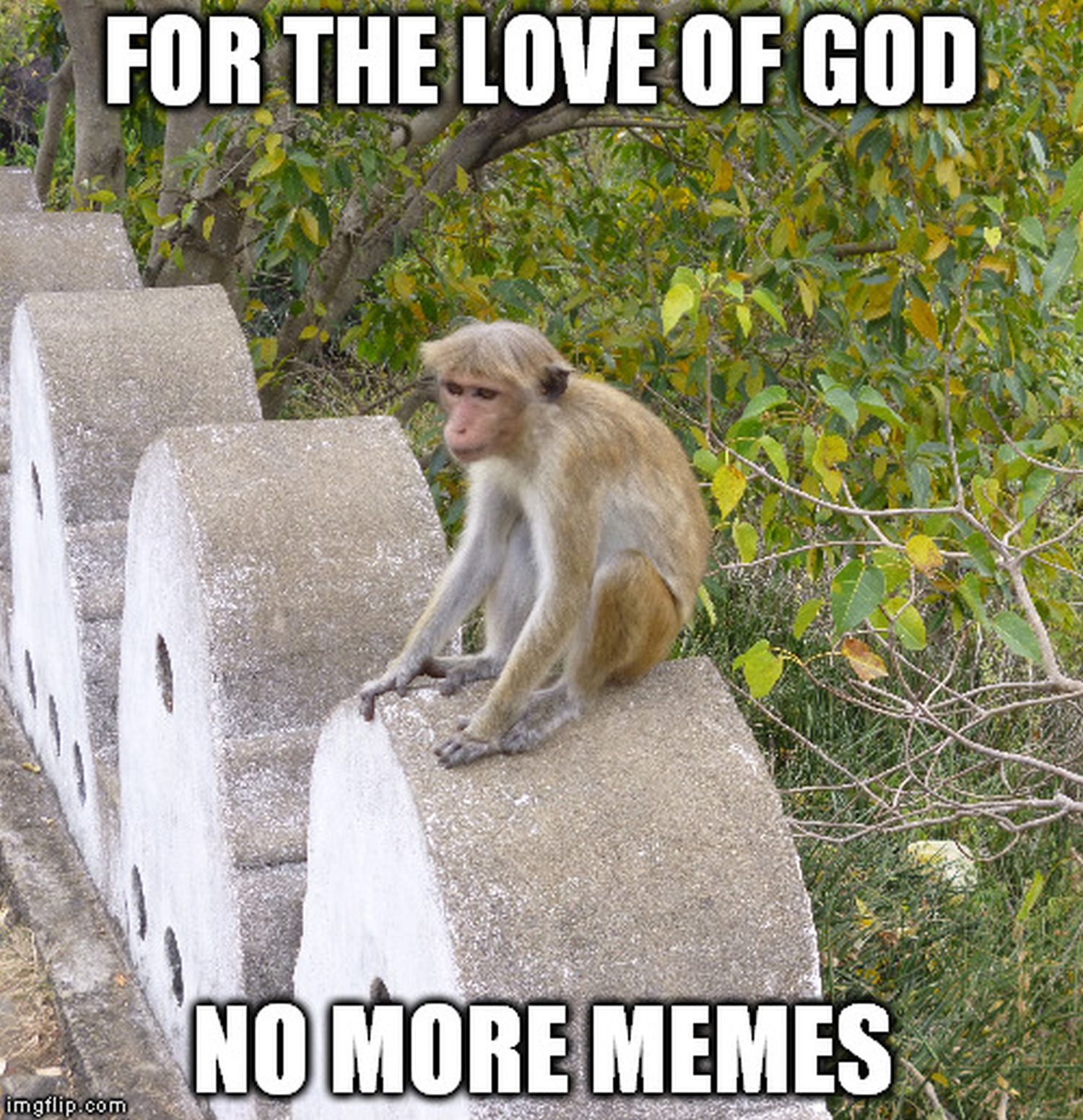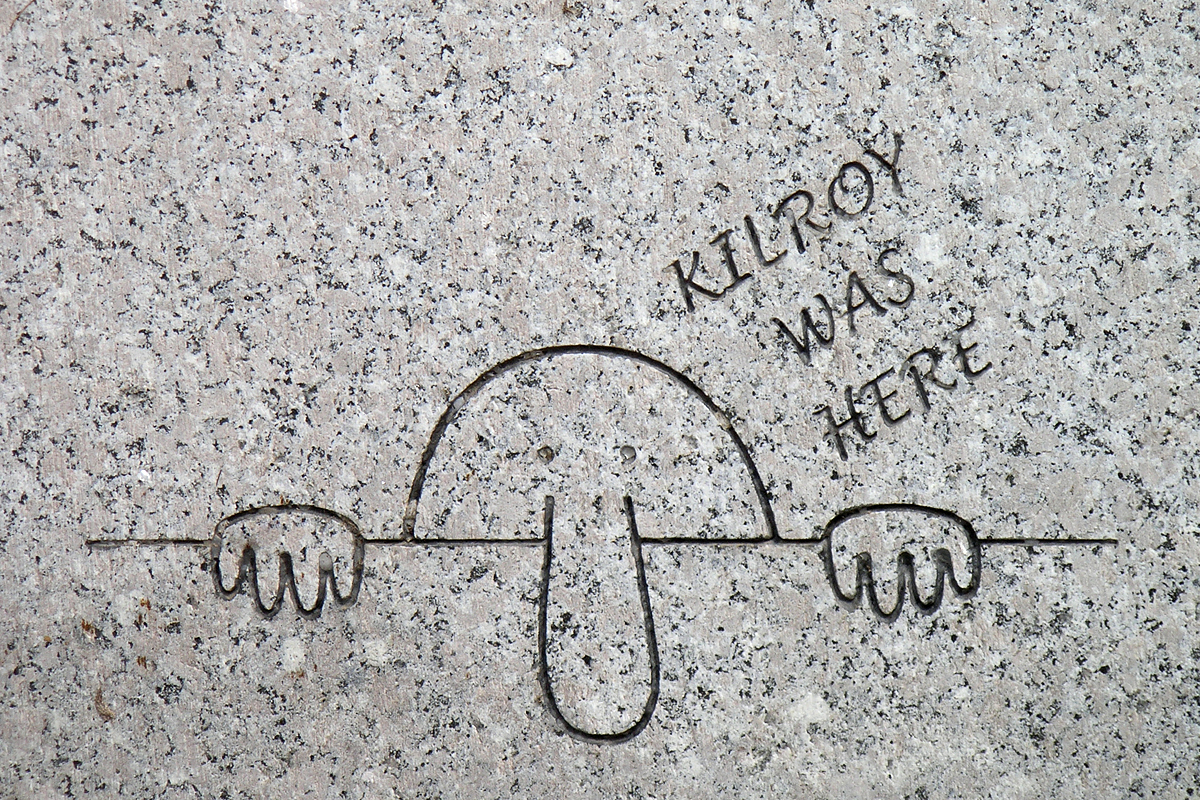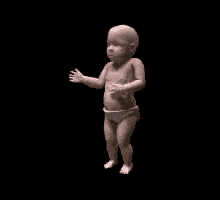By Lennlee Keep
What do Pepe the Frog, the Spanish Inquisition, the blinking guy, the French Revolution, concern for the environment, and the Third Reich all have in common? These are all ideas that spread until they became pervasive throughout a culture or country. According to evolutionary biologist Richard Dawkins, they are also all cultural units of information, or as he called them, memes, a word derived from the Greek word “mimeme” and “gene.” Memes are, essentially, a “cultural gene.”
Dawkins contends that our ideas, ideals, cultures, and customs replicate themselves. Almost like a virus, they travel from person to person through imitation, sharing, and repetition. While all memes are ideas, not all ideas become memes because not all ideas are worth passing on or copying.

Richard Dawkins becomes part of a meme himself
Memes, as we have come to know them—visual representations of feelings, thoughts, ideas, or just plain jokes—have in some form or another been found dating back to 3 B.C. Archeologists uncovered a mosaic in what was the ancient city of Antioch, a piece in three frames, which seems to depict a bathing scene. The first frame is of a servant preparing a bath; the second frame, a young man running away from taking the bath, being pursued by an older servant who is unable to catch him; the last scene, a “reckless” but seemingly happy skeleton of the young man is sitting casually with a jug of wine.
The inscription below him reads: “Be cheerful, Live your life.” The story here seemingly says, “Don’t let anyone tell you how to live! Do what you want because we are all going to die anyway.”
This may be the original YOLO.

Memes also aren’t even species-specific; they serve a function in the animal kingdom as well. In 1965, primatologists studying a group of macaque monkeys on Koshima Islet in Japan observed the monkeys cleaning the sweet potatoes before they ate them. The animals would spend a lot of time painstakingly picking off sand and dirt until it was clean enough to eat. One day, a single female monkey took her potato to the ocean and rinsed it clean. This behavior was then “transmitted” to other monkeys in the group and then beyond to other monkeys on the island. “Mime me” in action.
There are still memes about macaque monkeys, but they are a lot different.

Our great-grandparents may not know how to operate the computer or talk to Siri, but even they had their meme, which can still be found around the globe today. His name was Kilroy. With his long nose and bald head, he was there for it, whatever it was. While there are myths and legends about his origins, the truth is that no one is sure where Kilroy started. One legend has it that it originated from ship inspector James Kilroy, while another credits a serviceman named Francis Kilroy. His origin isn’t as important as what Kilroy symbolized, kind of like today’s “blinking white guy” meme.

Kilroy was the fighting spirit of American soldiers during WWII, and so prolific was the “Kilroy” mark it’s rumored that Germans thought Kilroy might be a real spy. He traveled overseas and back again, and like a good meme, hung around for a while. He crossed over from mere graffiti to film and television, appearing in the 1970 war movie Kelly’s Heroes and was referenced in a 1975 episode of M*A*S*H*. Kilroy was the meme heard round the world.
Dawkins’s work definitely popularized the idea of memes as cultural transmission, no matter the medium. But some scholars argue there’s a gap between Dawkins’s book and memes in the digital world.
Professor Limor Shifman of the Hebrew University of Jerusalem, who studies internet memes, contends that digital memes are unique because they are not just a single idea, but groups of ideas created with an awareness of each other.
Take Pepe the frog, “star” of Feels Good Man, on his own an easy-going frog, but memes created from the image of Pepe became a symbol for white supremacy. Shifman’s definition of Internet memes is “digital content units with common characteristics, created with awareness of each other, and circulated, imitated, and transformed via the Internet by many users.” And users decide what gets copied and passed on, which is where things can get out of hand.
Clip: Psychologist & Memetist Dr. Susan Blackmore explains the origins of the term "meme" and its evolution to the Internet, leading to comic character Pepe's escape to the "memisphere."
Watch @FeelsGoodManDoc Monday October 19 on @PBS.#FeelsGoodManPBS pic.twitter.com/qVVI4FTXbP— Independent Lens (@IndependentLens) October 10, 2020
The best example is artist Matt Furie’s poor Pepe, who users transformed from a friendly frog guy into a symbol of hate, to the point where the way he’d been used online led the Anti-Defamation League to put Pepe on its list of hate symbols. Furie even tried to “kill” off Pepe the character in a comic strip and hoped that was the end of it. But internet memes are not something easily controlled or eradicated. (Though Pepe did have a re-birth of sorts, as you’ll see in the film.)

But this is just one kind of character kidnapping. Artist KC Green is the creator of the now-famous “This Is Fine” dog, published originally in Green’s comic On Fire. While many are familiar with the coffee-sipping dog, few have seen the original comic. “This is fine” is actually just the first few frames of a strip; the whole comic looks like this:

Things are even less fine than the deadpan single-panel implied. During the 2016 election cycle, the Republican National Committee decided to use the “This Is Fine” dog as a joke/jab at the Democratic National Convention, but Democrats, artist KC Green and the original publisher swung back with this:
. @GOP We actually paid the artist who made this. Here's what he came up with. pic.twitter.com/4D4bmx9ccp
— The Nib ✒️ (@thenib) July 26, 2016
The internet is still in some ways the Wild West, and putting your meme and your art out in the world requires a certain amount of faith in humanity, diligence and maybe a good rights attorney on retainer.
 But just like Dawkins’ meme, every digital meme isn’t worth copying or passing on.
But just like Dawkins’ meme, every digital meme isn’t worth copying or passing on.
Internet memes haven’t been around long, but their staying power is phenomenal. The dancing baby came out in 1996 and is considered by many to be the first digital meme. It took hours to download and was a bit creepy. The dancing baby made the jump to other forms of media by its famous appearance on the hit television series Ally MacBeal.
Soon after, The Hamster Dance was born. While it was far more rudimentary than the baby before it, it was, and still is, a delightfully infectious little meme worm.
Then there was Badger, badger, badger, badger, based on a Flash animated meme by British animator Jonti Picking. of cartoon badgers doing calisthenics over a fast bassline, which became an internet phenomenon. Many other “early” memes were created in (a) Flash, but as technology evolved our love of these rudimentary forms of animation waned.
Now we don’t need all of the flash of Flash for a meme to gain traction. Grumpy Cat is the face that launched 1000 memes. The distracted boyfriend was originally a stock photo by photographer Antonio Guillem, labeled “Disloyal man walking with his girlfriend and looking amazed at another seductive girl.” In both of these cases, the meme is the image itself, but what keeps it spreading is the global creativity of millions of people that are continually adding new text, which keeps the images relevant and circulating.
The “This is Fine” dog certainly hasn’t been the last meme in the political arena. Indeed, many elected representatives have a meme account. Some even try to use memes to raise their profile. For example, Mike Bloomberg hired a company to create memes for his campaign, hoping it would go viral. The forced results were not as he had expected. (Were former Fyre Festival promoters the best choice for the job, for that matter?)

Some advertising agencies have narrowed their focus strictly to creating memes for products, candidates, and campaigns. There are eyes trained on every event, post, speech, and debate looking for the screenshot or phrase that is the punchline that will be tomorrow’s “share.” Their goal is to get their image from your social media to your texts, to your email, to your friends, and to theirs.
Memes are a way to spread ideas but you need to put some thought into what you share. If it’s making a joke, is it at another person or group’s expense? Would forwarding this meme benefit a movement or company? Is it worth replicating?
Dawkins’s definition of a meme is an idea carried on the wind, acted out by one, and copied by another. The ideas are in the air and on the phone and in our media, and sometimes the bad ones are being replicated, over and over. Again, Meme, mime me. A movement of peace can travel around the world as fast as a movement of hate.
Putting any idea out into the digital world is like putting glitter in front of a fan, it goes all over the place. The only thing that makes that idea go from me to you and you to meme is us.




































